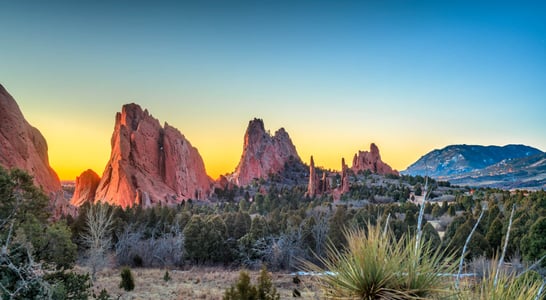
Earth Overshoot Day
Symbolizing humanity's responsibility, and reflecting the urgency to restore balance by valuing and preserving Earth's resources for future generations.
Imagine the planet as a huge piggy bank where, instead of money, we deposit all the natural resources we need to live: water, air, trees, etc.
Now, think of Earth Overshoot Day as the moment each year when we’ve taken out everything the Earth can afford to give us within that year, and we start overdrawing. Not great for our big green bank, right?
Earth Overshoot Day is when humanity uses up nature’s budget for the year. It’s like we’ve eaten all the cookies in the jar way before the year is up and now have to wait until next year for it to refill magically.
This date moves around each year, but the trend is not our friend. It’s been creeping earlier since the 1970s due to our growing appetites and expanding waistlines (figuratively speaking, in terms of our consumption patterns).
Why do we mark this day? It’s a wake-up call, a reminder that we’re using resources faster than the Earth can replenish them. The main culprits are how much we consume, how we make things, how many of us there are, and how much nature can produce.
Think of it as nature’s way of saying, “Hey, you’re spending too fast!” Countries even have their own Overshoot Days, showing how some are eating into our planetary budget quicker than others.
For example, if everyone lived like the folks in Qatar, we’d hit Earth Overshoot Day by February 10! But, if we all lived like Jamaicans, we’d make it all the way to December 20.
This quirky day isn’t just about doom and gloom; it’s a chance to change how we live, consume, and think about our planet. It’s about finding a balance that ensures our Earth’s piggy bank stays healthy and full, not just for us but for all future generations.
History of Earth Overshoot Day
Earth Overshoot Day has an intriguing story that’s also a bit of a wake-up call. It all started with Andrew Simms, a thinker at the New Economics Foundation in the UK.
He came up with this concept, and in 2006, the Global Footprint Network teamed up with the foundation to launch the very first Earth Overshoot Day campaign. Since 2007, the World Wildlife Fund (WWF), a major conservation group, has also been involved.
This day marks when humans have used more from nature than our planet can renew in a year. It’s calculated by dividing the Earth’s biocapacity (what our planet can provide in a year) by humanity’s demand for those resources, then multiplying by 365 (the number of days in a year).
The date of Earth Overshoot Day has been moving up over the years. In the early days, in December, recently, it has shifted to August, reflecting our demand for Earth’s natural resources. For instance, the dates have moved from December 25, 1971, to August 2, 2023.
This movement isn’t just about dates changing. It signals that our ecological footprint is growing, and our planet’s biocapacity can’t keep up.
At the global level, we’re running a deficit, consuming more than Earth can regenerate. This overuse has various impacts, like carbon dioxide accumulation in the atmosphere, contributing to climate change.
Andrew Simms’s original idea has sparked a global conversation about sustainability and how we can adjust our consumption patterns to live within our planet’s means.
It’s a reminder that every action counts and that by making more sustainable choices, we can help push Earth Overshoot Day later in the year, aiming for a time when our demands match what Earth can provide.
How to Celebrate Earth Overshoot Day
Celebrating Earth Overshoot Day meaningfully can inspire positive change and raise awareness about our planet’s limited resources. Here are some engaging and quirky ideas to mark the day and contribute to moving the date back:
Dive into the Solutions Map: Explore innovative solutions that communities worldwide implement to live more sustainably. Get inspired and share your findings with friends and family, from recycling programs to renewable energy projects.
Host a Plant-Based Potluck: Invite your friends over for a meal where everyone brings a dish made entirely from plants. It’s a fun way to show how delicious and diverse plant-based eating can be, reducing your food footprint.
Calculate Your Footprint: Use an online calculator to find out your personal Earth Overshoot Day. Then, challenge yourself to change your lifestyle to push that date back. Share your results and encourage others to do the same.
Green Your Commute: For a week, try to reduce your carbon footprint by walking, biking, carpooling, or using public transport. Share your experience on social media to inspire others to consider more sustainable ways to get around.
Support Sustainable Brands: Commit to buying products from companies that prioritize sustainability. Choosing eco-friendly brands can make a big difference in clothing, food, or everyday items.
Join a Local Cleanup: Participate in or organize a local cleanup event in your community. Cleaning up local parks, beaches, or neighborhoods helps the environment and strengthens community bonds.
Educate and Advocate: Share information on your social media channels about Earth Overshoot Day and why it matters. Encourage discussions on how we can all contribute to a more sustainable planet.
Also on ...
View all holidaysNational Mountain Climbing Day
Scaling heights, conquering challenges, the crisp air, and breathtaking vistas—a symphony of nature's grandeur unfolds in ascent.
India Pale Ale Day
Sip on a hoppy and refreshing brew that's perfect for any occasion, whether you're grilling with friends or just kicking back after work.
Colorado Day
Nestled in the heart of the Rockies, this state offers outdoor adventures galore, from mountain hikes to scenic drives.
National Pinball Day
Get lost in the kinetic dance of lights and steel, navigating obstacles, chasing scores—a pinball symphony of thrill.




